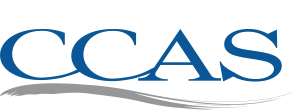NEWS & Upcoming Events

60th annual meeting
Get ready! November 5-8 at the St. Louis Union Station Hotel, Missouri
>> Events & Programs
WHO WE ARE / WHAT WE DO
CCAS, founded in 1965, is the national association for deans of arts & sciences. CCAS represents 800+ deans and 1200+ associate/assistant deans and fosters excellence in colleges and schools of arts & sciences by:
- connecting deans with each other
- providing professional development
- serving as a forum for discussing issues in higher education
- advocating for liberal learning









